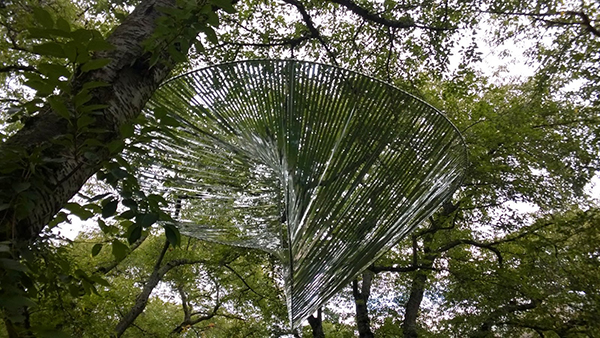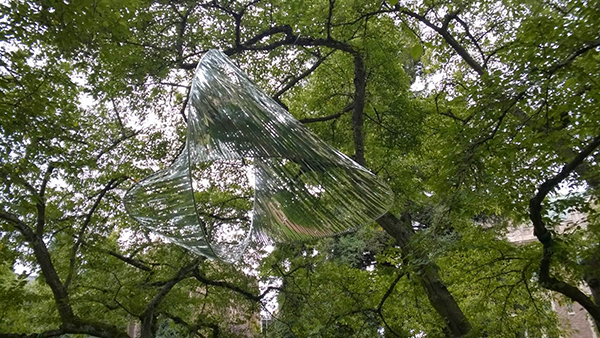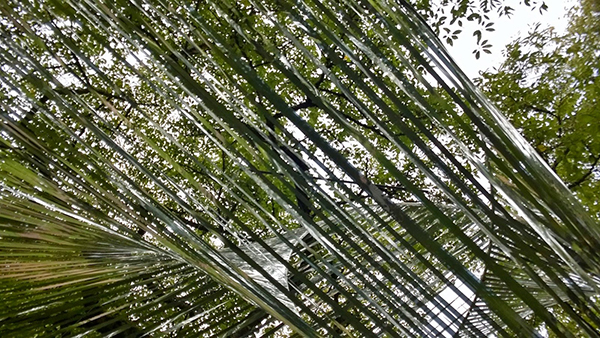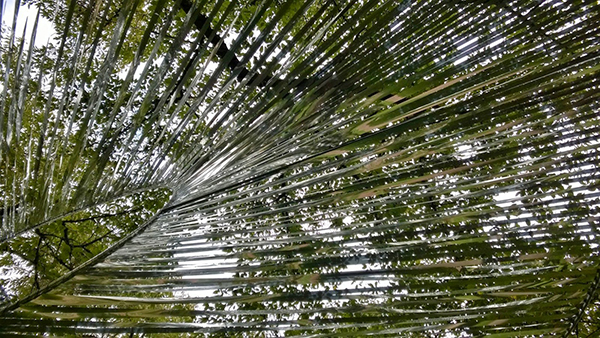Fall, in Seattle, is a time of spiders. Giant house spider males, close relatives to the Tegenaria duellica David Sedaris writes about feeling such easy if fraught kinship with in his essay April & Paris: Caught in the Web of Nature, search for females in our basement, darting away at our step. Outside, the garden has become crowded with webs. Three spiders perched near the overgrown Russian sage made a killing, or rather many, in the spell of warm days early this month when unlucky bees buzzing from soft purple blossom to soft purple blossom were caught in their sticky embrace. The spiders wrapped the bees in the fine, strong silk they make in their spinneret glands, and then they ate.
Over at the University of Washington’s Seattle campus, Alyson Piskorowski’s untitled sculpture has been suspended among the quad’s spring-famous cherry trees since mid-September. When the linked circles of the piece’s metal frame rotate in the breeze, the Mylar strips strung between them flicker with reflections of light and foliage and whisper with gossipy murmur.

From below Alyson Piskorowski’s Untitled, 2014, one of twelve installations that make up the public art exhibition Mad Campus, up now at Seattle’s University of Washington campus through October 25. Images by the author.

What makes spider webs so dangerous to their would-be prey and to the autumn gardener is how they hide in plain sight. The thin silken threads and the planes of intricately spiraling circles they form only flash into view at just the right angle, in just the right light. Piskorowski’s sculpture can’t, and shouldn’t, approach their self-effacement. The wind and the light and the sough, not the bees, are its spoils. And of those things, there’s always more, and nothing has to die; the trap is a temporary one.
Still, transfixed beneath the piece, I imagine myself a spider at the edge of its web, one leg poised on a signal line, feeling the vibration that lets me know something has become entangled.

